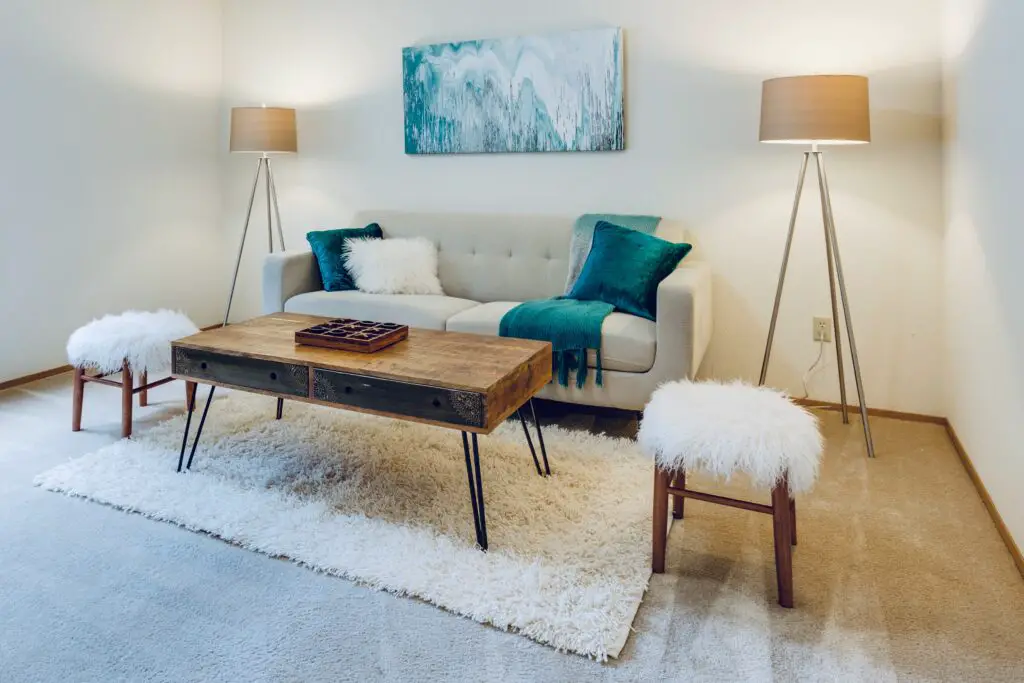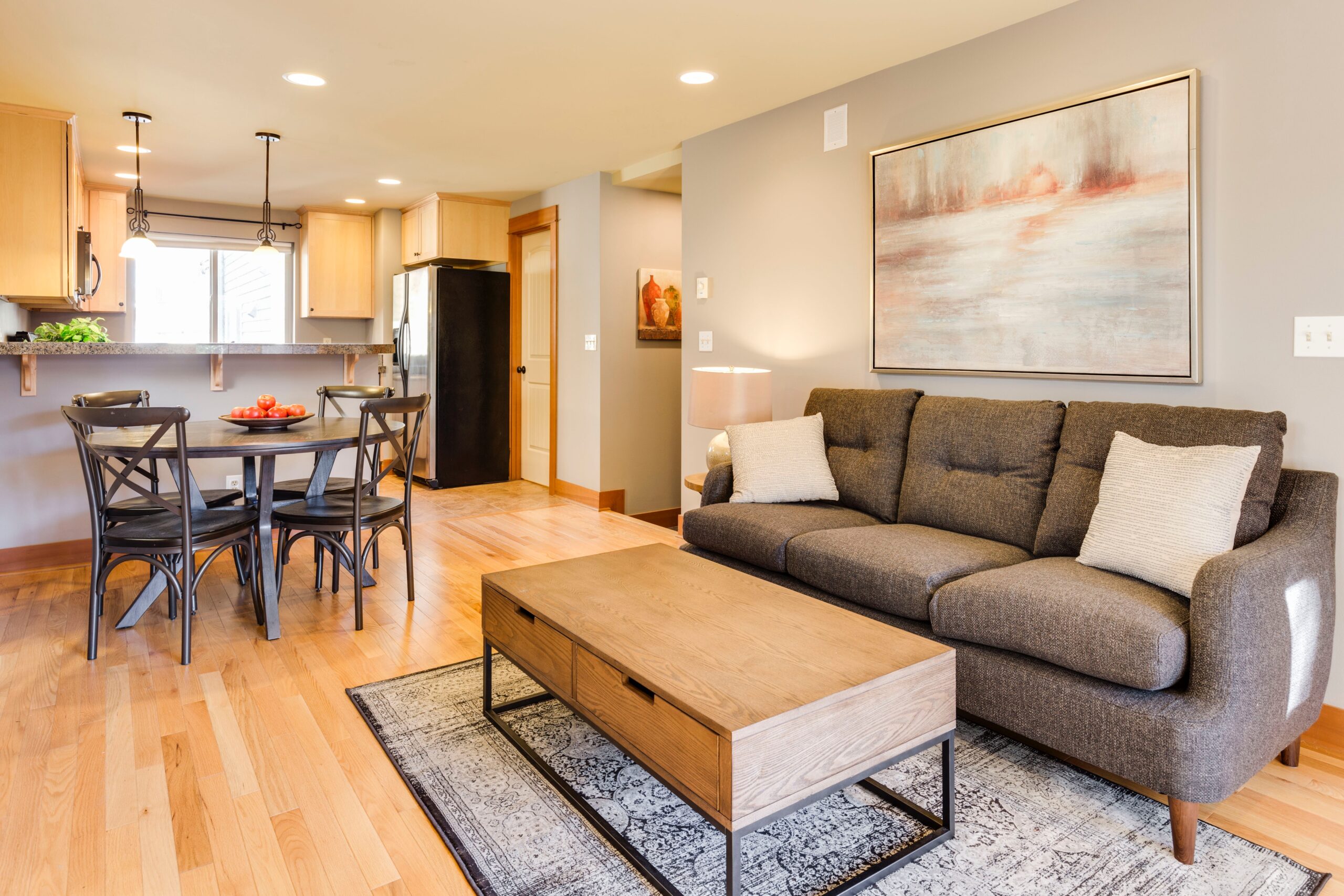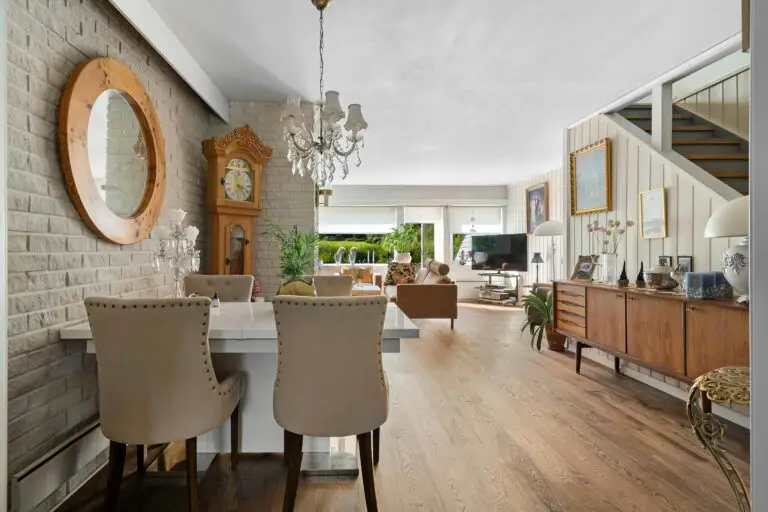Area rugs are like the unsung heroes of interior design, quietly tying a room together while adding warmth and texture. They can transform a space from ordinary to extraordinary, but choosing the right one can be a daunting task. Fear not, as this guide is here to walk you through every aspect of choosing the right area rug for your room.
Whether you’re looking to add a cozy touch to your bedroom, define a living room seating area, or enhance your dining room’s decor, we’ve got you covered. So, let’s dive into the world of area rugs and ensure you make an informed choice that complements your space and style.
I. Consider Room Requirements

Size of the Room
The size of your room plays a crucial role in determining the right area rug dimensions. Ideally, the rug should fit comfortably within your room’s boundaries. If it’s too small, it can get lost in the space; if it’s too large, it might overwhelm it.
Pro Tip: Measure your room’s dimensions and aim for a rug that leaves at least 18 inches of bare floor around its edges.
Purpose of the Room
Different rooms have different functions, and your choice of area rug should reflect this:
- Living Room: In a living room, an area rug should anchor the seating area. Ensure it’s large enough to fit all the furniture or, at the very least, the front legs of your seating pieces.
- Bedroom: In the bedroom, a rug can add warmth to your feet when you get out of bed. Choose a rug that extends 18-24 inches beyond the sides of the bed for a balanced look.
- Dining Room: For the dining area, select a rug that’s large enough to accommodate both the table and chairs, even when the chairs are pulled out.
Pro Tip: Consider the room’s purpose to guide your choice of rug size and placement.
Traffic Flow and Footfall
Take into account the flow of traffic in the room. High-traffic areas may benefit from durable and low-pile rugs that can withstand the wear and tear of frequent use. In contrast, low-traffic areas allow for more delicate and plush rug options.
Pro Tip: In high-traffic areas, opt for darker rug colors or patterns to hide potential stains or wear.
II. Rug Size and Shape

Determining the Right Rug Size
Choosing the right rug size depends on the room’s dimensions and furniture arrangement. Here’s a breakdown:
- Living Room: If your furniture is against the walls, a larger rug can fit under all the legs. If the furniture is in the center of the room, a smaller rug can define the seating area.
- Bedroom: For a full-sized bed, an 8’x10′ rug is ideal, while a 9’x12′ rug works well for a king-sized bed.
- Dining Room: The rug should extend at least 24 inches beyond the table on all sides to accommodate chairs.
Pro Tip: Use painter’s tape to mark the desired rug size on your floor before purchasing to visualize the fit.
Common Rug Shapes and Their Suitability
The shape of your area rug should harmonize with your room’s layout:
- Rectangular Rugs: Versatile and suitable for most room shapes and furniture arrangements.
- Round Rugs: Ideal for defining cozy sitting areas or adding contrast to rooms with predominantly straight lines.
- Runner Rugs: Long and narrow rugs that are perfect for hallways, entryways, or kitchens.
Pro Tip: Consider the room’s architecture and furniture layout when choosing a rug shape.
Rug Placement Options
How you place your rug can affect the room’s overall look:
- Under Furniture: To create a unified look, consider placing the front legs of your furniture on the rug. This anchors the seating area.
- Centered: In some rooms, it might make sense to center the rug in the room without any furniture on it.
- Partial Coverage: In certain spaces, a rug can be used to highlight specific areas, like a reading nook or dining area.
Pro Tip: Experiment with rug placement to find the arrangement that suits your room best.
III. Material and Texture

Various Rug Materials
The material of your rug impacts its feel, durability, and maintenance:
- Wool: Naturally soft and durable, wool rugs are great for high-traffic areas. They resist stains and come in a wide range of colors and patterns.
- Cotton: Lightweight and affordable, cotton rugs are easy to clean but less durable than wool.
- Synthetic: Materials like nylon and polyester are stain-resistant and budget-friendly but may not have the same luxurious feel as natural fibers.
- Natural Fibers: Jute, sisal, and seagrass rugs provide a rustic, organic look. They’re great for casual spaces.
Pro Tip: Consider your room’s needs, budget, and desired texture when choosing a rug material.
Texture Considerations
The texture of a rug can add depth and character to your room:
- Shag: Plush and luxurious shag rugs offer a soft, cozy feel underfoot.
- Flatweave: Thin and lightweight, flatweave rugs are great for high-traffic areas and easy to clean.
- Plush: A thick, soft pile creates a sense of luxury and comfort.
Pro Tip: Match the rug’s texture to your room’s style and comfort requirements.
IV. Style and Design
Coordinating with Existing Decor
Your area rug should complement your room’s existing decor and color scheme. Consider these factors:
- Color: Choose a rug color that either complements or contrasts with your furniture and walls. Neutrals are versatile, while bold colors can make a statement.
- Pattern: Rug patterns range from solid colors to intricate designs. Match patterns to your room’s style, but avoid overwhelming busy spaces.
Pro Tip: Bring paint swatches and fabric samples when shopping for rugs to ensure a cohesive look.
Rug Patterns and Designs
Rug designs can set the tone for your room:
- Solid: Solid-colored rugs are versatile and can anchor a room with bold furniture or patterns.
- Geometric: Modern and stylish geometric patterns add visual interest to contemporary spaces.
- Floral: Soft and inviting floral rugs are perfect for traditional and cozy rooms.
- Oriental: Timeless and elegant, oriental rugs can add a touch of luxury to any room.
Pro Tip: Mix and match rug patterns with your existing decor for a balanced look.
V. Maintenance and Durability

Cleaning and Care
To keep your area rug looking its best, follow these maintenance tips:
- Regular Vacuuming: Vacuum your rug regularly to remove dust and debris.
- Spot Cleaning: Treat stains promptly with appropriate cleaners or professional help.
- Rotate: To prevent uneven wear, rotate your rug annually.
Pro Tip: Check the manufacturer’s care instructions for specific guidance on your rug’s material.
Rug Durability and Longevity
The durability of your rug depends on its material, construction, and usage. High-traffic areas may benefit from rugs made of durable materials like wool, nylon, or polypropylene.
Pro Tip: Invest in a high-quality rug pad to extend the life of your rug and protect your flooring.
VI. Budget Considerations
Setting a Budget
Before you start shopping, determine your budget. Area rug prices can vary widely, so having a clear budget in mind helps narrow down your options.
Pro Tip: Consider the rug’s long-term value. A slightly more expensive, high-quality rug may outlast multiple cheaper ones.
Exploring Price Points
Area rugs come in a range of price points, from budget-friendly to luxury. Here’s what you can expect:
- Budget: Under $200 for smaller rugs, basic designs, and synthetic materials.
- Mid-Range: $200-$1000 for a wide variety of styles, materials, and sizes.
- High-End: Over $1000 for luxury materials, intricate designs, and larger sizes.
Pro Tip: Look for sales, discounts, and online marketplaces to find quality rugs within your budget.
VII. Rug Shopping Tips

Where to Shop
You can find area rugs in various places:
- Local Stores: Visit local furniture stores, carpet shops, or specialty rug boutiques for in-person shopping.
- Online Retailers: Explore a vast selection online, where you can read reviews and compare prices.
- Artisan Markets: Consider handmade or artisanal rugs for unique, one-of-a-kind pieces.
Pro Tip: If shopping online, check the return policy in case the rug doesn’t match your expectations.
Examining and Testing
When shopping for an area rug, take these steps:
- Feel the Texture: Touch and walk on the rug to gauge its comfort and texture.
- Inspect the Weave: Check the rug’s weave and knots for quality and durability.
- Consider Lighting: Assess how the rug looks in different lighting conditions to avoid surprises at home.
Pro Tip: Take pictures and measurements of your room to ensure a good fit and style match.
VIII. Eco-Friendly and Sustainable Options
Environmentally Friendly Rug Materials
If sustainability is a priority, consider these eco-friendly rug materials:
- Organic Wool: Sourced from sheep raised using sustainable and ethical practices.
- Recycled Materials: Rugs made from recycled fibers reduce waste and environmental impact.
Pro Tip: Look for certifications like GOTS (Global Organic Textile Standard) or Fair Trade for ethically produced rugs.
Ethical Sourcing and Production
Support rug brands that prioritize ethical practices:
- Fair Wages: Choose brands that pay fair wages to their workers, ensuring fair labor conditions.
- Sustainable Production: Look for companies that reduce water usage and energy consumption in their production process.
Pro Tip: Research brands’ ethical and sustainable commitments before making a purchase.
Conclusion
Choosing the right area rug for your room is a process that requires careful consideration of size, material, style, and budget. By following these expert tips, you can confidently choose a rug that not only enhances your room’s aesthetics but also adds warmth, comfort, and functionality.
Remember, the perfect rug is not just a piece of decor; it’s a foundation for your room’s entire ambiance. So, take your time, explore your options, and enjoy the journey of transforming your living space with the ideal area rug.
Frequently Asked Questions
1. How do I choose a rug for my area?
To choose a rug for your area, consider the room’s size, purpose, and traffic flow. Measure your space, determine the room’s function, and select a rug size that fits your needs. Additionally, choose a material and design that complements your room’s decor.
2. What type of area rug makes a room look bigger?
A larger area rug with a light or neutral color can make a room look bigger. When the rug extends under furniture or all the way to the walls, it creates a sense of spaciousness.
3. How do you pick a good bedroom rug?
For a bedroom, select a rug that’s large enough to extend at least 18-24 inches beyond the sides of the bed. This provides a soft and comfortable landing when you get out of bed.
4. How should an area rug look in the living room?
In the living room, an area rug should anchor the seating area. Ideally, it should be large enough for all the furniture to sit on or at least have the front legs of the furniture on the rug.
5. Where is the best place to put an area rug in a bedroom?
In a bedroom, the best place for an area rug is under the bed. It should extend beyond the sides and foot of the bed to create a balanced and cozy look.
6. What color should a rug be in the living room?
The color of the rug in the living room should complement your existing decor. Neutral colors like beige, gray, or cream are versatile choices. However, you can also opt for a rug that matches or contrasts with your furniture and wall colors.
7. Should a rug be darker or lighter than the floor?
It’s a matter of personal preference. A rug that is slightly darker than the floor can create contrast and draw attention, while a lighter rug can make the room feel more open and spacious.
8. Should rugs be lighter or darker than walls?
Again, this depends on your design goals. Lighter rugs can make a room feel brighter and airier, while darker rugs can add warmth and coziness. Consider the overall color scheme and balance when making your choice.
9. Should an area rug be the same color as the sofa?
An area rug doesn’t have to be the same color as the sofa, but it should complement it. Matching colors can create a cohesive look while contrasting colors can add visual interest.
10. Should a rug be the same color as the floor?
A rug can be the same color as the floor, but it doesn’t have to be. A rug that matches the floor can create a harmonious and unified look, while a contrasting rug can be a focal point in the room.
11. How do I choose an area rug color and pattern?
To choose the right color and pattern for an area rug, consider your room’s color scheme and style. Neutral colors are versatile, while patterns should complement your decor. Bring paint swatches and fabric samples when shopping to ensure a good match.



